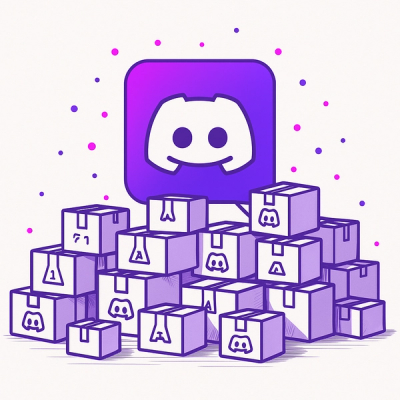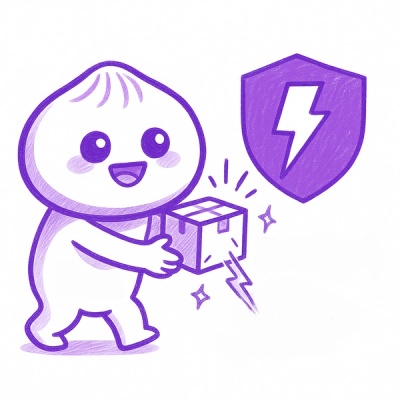
Research
/Security News
Weaponizing Discord for Command and Control Across npm, PyPI, and RubyGems.org
Socket researchers uncover how threat actors weaponize Discord across the npm, PyPI, and RubyGems ecosystems to exfiltrate sensitive data.
github.com/Azure/azure-sdk-for-go/sdk/data/azcosmos
This client library enables client applications to connect to Azure Cosmos DB via the NoSQL API. Azure Cosmos DB is a globally distributed, multi-model database service.
Note: If you don't have an Azure subscription, create a free account before you begin. You can Try Azure Cosmos DB for free without an Azure subscription, free of charge and commitments, or create an Azure Cosmos DB free tier account, with the first 400 RU/s and 5 GB of storage for free. You can also use the Azure Cosmos DB Emulator with a URI of https://localhost:8081. For the key to use with the emulator, see how to develop with the emulator.
You can create an Azure Cosmos DB account using:
Install the Azure Cosmos DB SDK for Go with go get:
go get -u github.com/Azure/azure-sdk-for-go/sdk/data/azcosmos
In order to interact with the Azure Cosmos DB service you'll need to create an instance of the Client struct. To make this possible you will need a URL and key of the Azure Cosmos DB service.
The SDK can make use of azcore's logging implementation to collect useful information for debugging your application. In order to make use of logs, one must set the environment variable "AZURE_SDK_GO_LOGGING" to "all" like outlined in this public document.
Once that is done, the SDK will begin to collect diagnostics. By default, it will output the logs to stdout - printing directly to your console - and will record all types of events (requests, responses, retries). If you'd like to configure a listener that acts differently, the small snippet below shows how you could do so.
import (
"os"
azlog "github.com/Azure/azure-sdk-for-go/sdk/azcore/log"
)
f, err := os.Create("cosmos-log-file.txt")
handle(err)
defer f.Close()
// Configure the listener to write to a file rather than to the console
azlog.SetListener(func(event azlog.Event, s string) {
f.WriteString(s + "\n")
})
// Filter the types of events you'd like to log by removing the ones you're not interested in (if any)
// We recommend using the default logging with no filters - but if filtering we recommend *always* including
// `azlog.EventResponseError` since this is the event type that will help with debugging errors
azlog.SetEvents(azlog.EventRequest, azlog.EventResponse, azlog.EventRetryPolicy, azlog.EventResponseError)
The following section provides several code snippets covering some of the most common Azure Cosmos DB NoSQL API tasks, including:
The clients support different forms of authentication. The azcosmos library supports authorization via Microsoft Entra identities or an account key.
Using Microsoft Entra identities
import "github.com/Azure/azure-sdk-for-go/sdk/azidentity"
cred, err := azidentity.NewDefaultAzureCredential(nil)
handle(err)
client, err := azcosmos.NewClient("myAccountEndpointURL", cred, nil)
handle(err)
Using account keys
const (
cosmosDbEndpoint = "someEndpoint"
cosmosDbKey = "someKey"
)
cred, err := azcosmos.NewKeyCredential(cosmosDbKey)
handle(err)
client, err := azcosmos.NewClientWithKey(cosmosDbEndpoint, cred, nil)
handle(err)
Using the client created in previous example, you can create a database like this:
databaseProperties := azcosmos.DatabaseProperties{ID: dbName}
response, err := client.CreateDatabase(context, databaseProperties, nil)
handle(err)
database, err := client.NewDatabase(dbName)
handle(err)
Using the above created database for creating a container, like this:
properties := azcosmos.ContainerProperties{
ID: "aContainer",
PartitionKeyDefinition: azcosmos.PartitionKeyDefinition{
Paths: []string{"/id"},
},
}
throughput := azcosmos.NewManualThroughputProperties(400)
response, err := database.CreateContainer(context, properties, &azcosmos.CreateContainerOptions{ThroughputProperties: &throughput})
handle(err)
item := map[string]string{
"id": "1",
"value": "2",
}
marshalled, err := json.Marshal(item)
if err != nil {
log.Fatal(err)
}
container, err := client.NewContainer(dbName, containerName)
handle(err)
pk := azcosmos.NewPartitionKeyString("1")
id := "1"
// Create an item
itemResponse, err := container.CreateItem(context, pk, marshalled, nil)
handle(err)
// Read an item
itemResponse, err = container.ReadItem(context, pk, id, nil)
handle(err)
var itemResponseBody map[string]string
err = json.Unmarshal(itemResponse.Value, &itemResponseBody)
if err != nil {
log.Fatal(err)
}
itemResponseBody["value"] = "3"
marshalledReplace, err := json.Marshal(itemResponseBody)
if err != nil {
log.Fatal(err)
}
// Replace an item
itemResponse, err = container.ReplaceItem(context, pk, id, marshalledReplace, nil)
handle(err)
// Patch an item
patch := PatchOperations{}
patch.AppendAdd("/newField", "newValue")
patch.AppendRemove("/oldFieldToRemove")
itemResponse, err := container.PatchItem(context.Background(), pk, id, patch, nil)
handle(err)
// Delete an item
itemResponse, err = container.DeleteItem(context, pk, id, nil)
handle(err)
This project is licensed under MIT.
If you encounter bugs or have suggestions, please
open an issue and assign the Cosmos label.
This project welcomes contributions and suggestions. Most contributions require you to agree to a Contributor License Agreement (CLA) declaring that you have the right to, and actually do, grant us the rights to use your contribution. For details, visit https://cla.microsoft.com.
When you submit a pull request, a CLA-bot will automatically determine whether you need to provide a CLA and decorate the PR appropriately (e.g., label, comment). Simply follow the instructions provided by the bot. You will only need to do this once across all repos using our CLA.
This project has adopted the Microsoft Open Source Code of Conduct. For more information see the Code of Conduct FAQ or contact opencode@microsoft.com with any additional questions or comments.
FAQs
Unknown package
Did you know?

Socket for GitHub automatically highlights issues in each pull request and monitors the health of all your open source dependencies. Discover the contents of your packages and block harmful activity before you install or update your dependencies.

Research
/Security News
Socket researchers uncover how threat actors weaponize Discord across the npm, PyPI, and RubyGems ecosystems to exfiltrate sensitive data.

Security News
Socket now integrates with Bun 1.3’s Security Scanner API to block risky packages at install time and enforce your organization’s policies in local dev and CI.

Research
The Socket Threat Research Team is tracking weekly intrusions into the npm registry that follow a repeatable adversarial playbook used by North Korean state-sponsored actors.